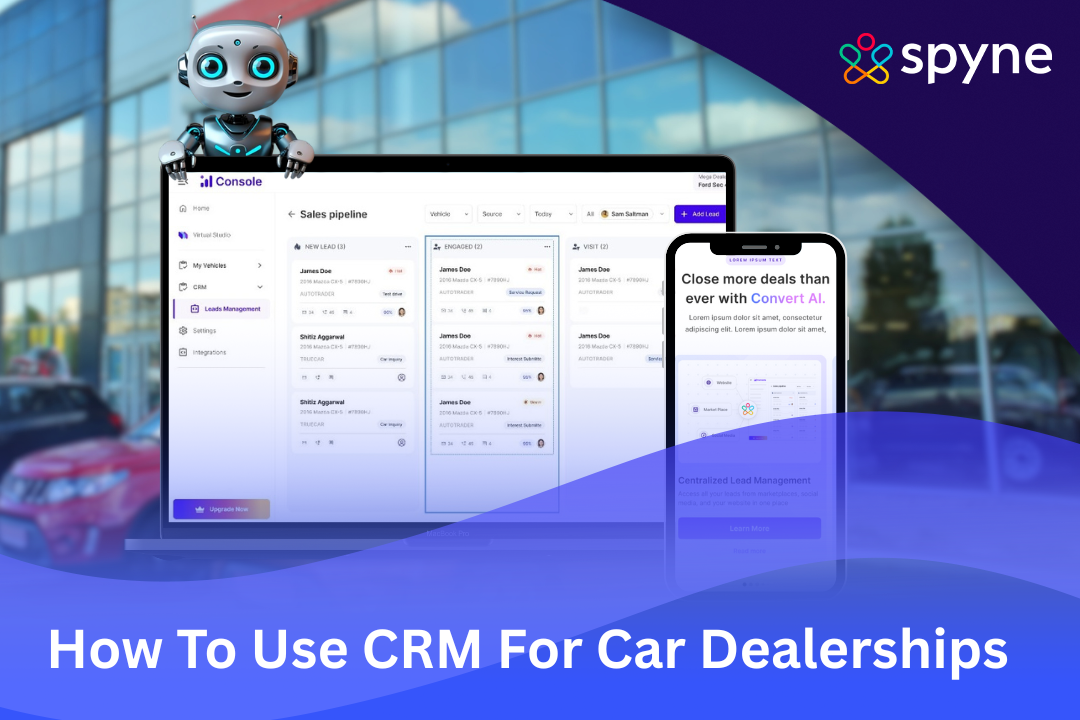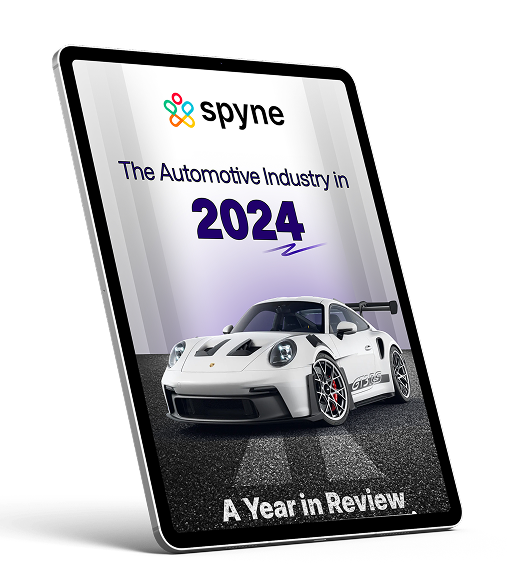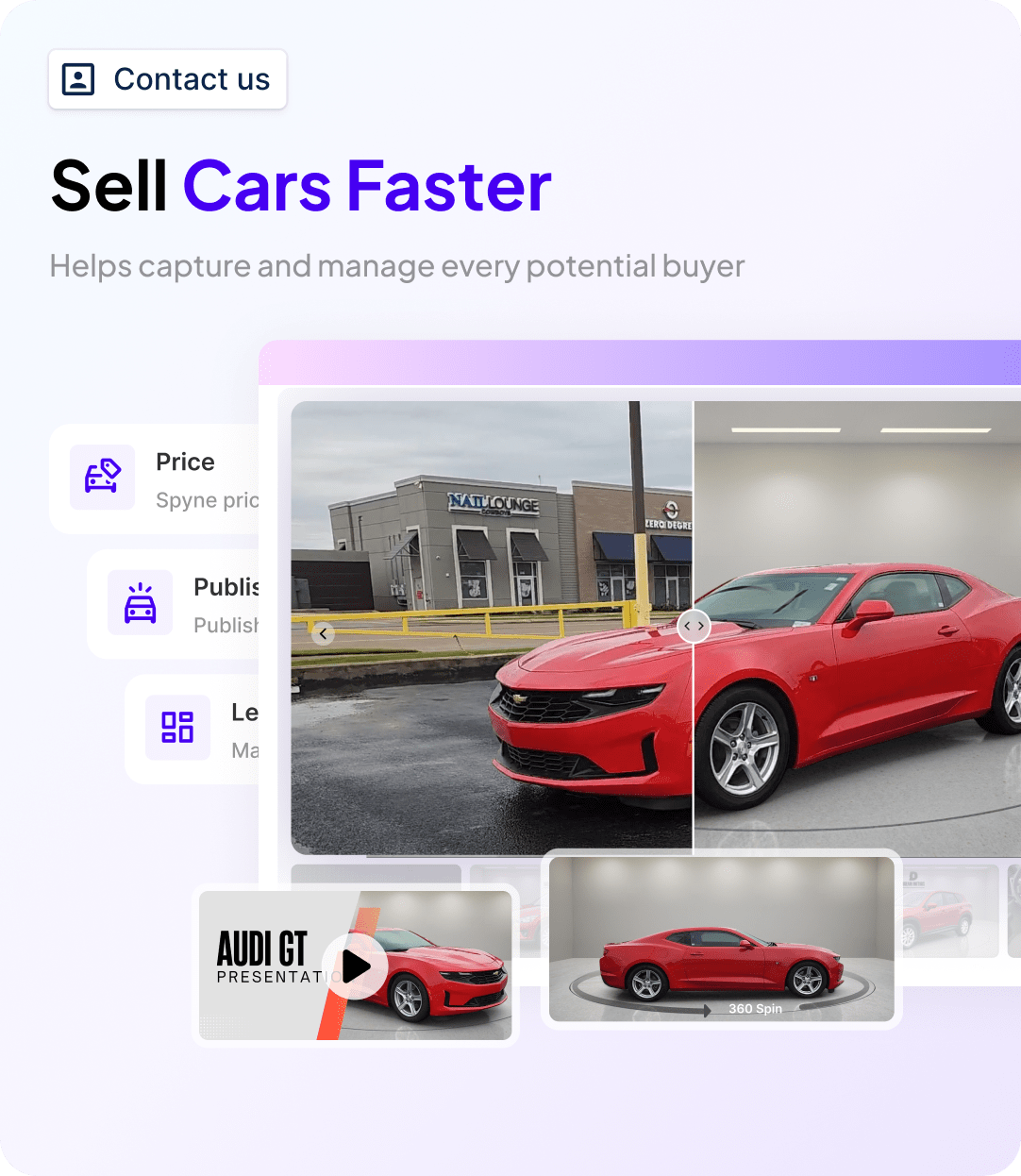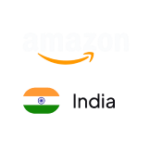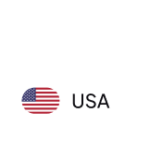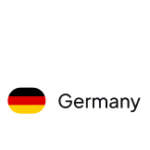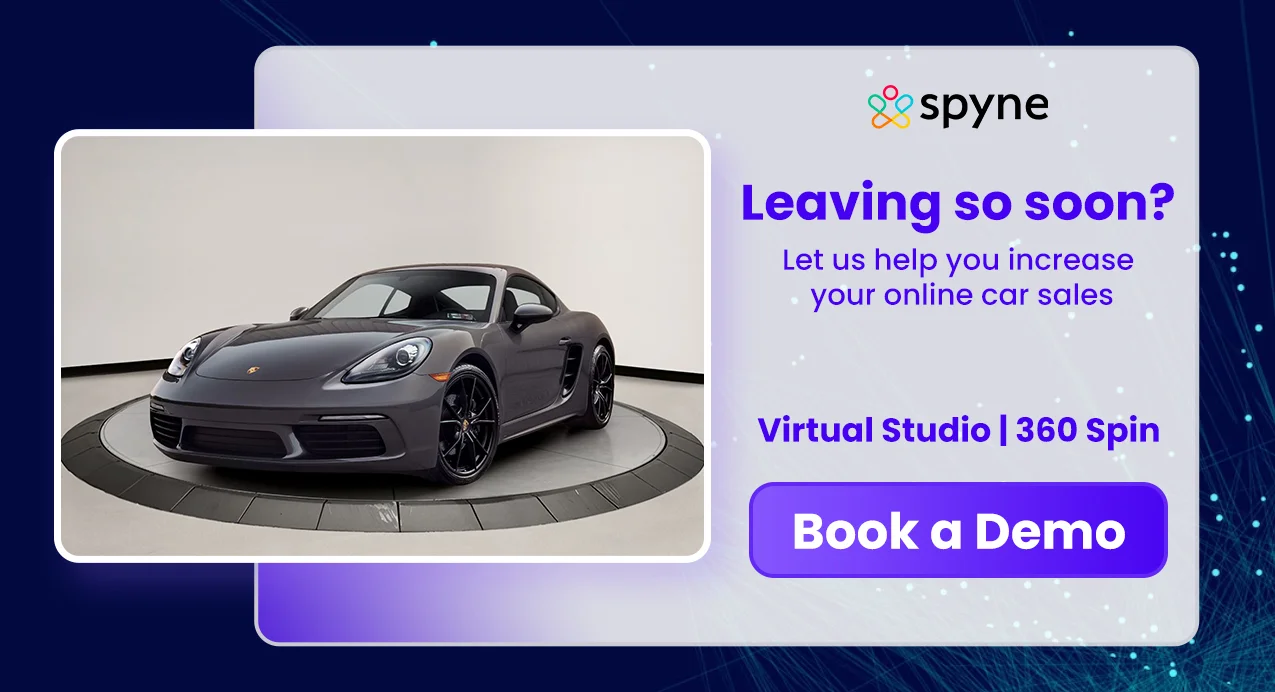Having an all-rounder tool could be amazing. You don’t have to juggle around with tasks to do them by yourself. One such tool is Customer Relationship Management. Managing leads, tracking customer interactions, and boosting sales are all essentials for a dealership; all of this could be achieved by the one-stop solution CRM. Without knowing how to use CRM effectively, you can not grow in today’s fast-paced automotive market. In this blog, we will be exploring the benefits, features, and how to use CRM software to get the most out of it in our dealership.
A Step-by-Step Guide on How to Use CRM in Your Dealership
Whether you are a newbie or an experienced, small dealership or a larger one, understanding how customer relationship management should be used is a must for all. This guide includes all the basics of how you should use CRM most effectively to get the results your dealership deserves.
Step 1: Choosing the Right CRM
To choose the right customer relationship management, you need to identify what the goals and requirements of your dealership are. Firstly, look for the features, ease of use, and scalability of a CRM software. Afterwards, you need to look at your budget, and this is how you can choose the best automotive CRM software to excel in today’s cluttered market.
Step 2: Setting up Your CRM
To proceed, you need to customize your system in a way that aligns with the requirements of your dealership. Import the customer’s data and integrate the existing tools with CRM. Furthermore, establish protocols for data entry and continuously monitor performance.
Step 3: Training Your Dealership Team
Training should be provided to the team on how they can use CRM software by organizing workshops. Providing them guidance on data entry, customer interaction, and automated follow-ups ensures better learning and consistency.
Step 4: Clean and Categorize Data
To import your data efficiently, you need to clean and organize it to ensure accuracy and that no errors are there. Knowing how to use CRM tools and categorizing data according to customer type, sales stage, etc, importing and analyzing organized data eventually becomes very easy.
Step 5: Track Customer Interactions
Track customer interaction in a CRM from every source, such as calls, email, or meetings, along with follow-ups. With the knowledge of how to use CRM for customer service, you can schedule reminders and track every interaction for a complete view of the customer’s journey.
Step 6: Manage Sales Pipeline
Optimizing dealership sales pipeline management by monitoring every stage of your sales progress. It also helps you to track key customer relationship management metrics such as deal size and closure probability to focus on the right leads and update your pipeline data.
Step 7: Automated Task and Workflow
Workflows and tasks can be automated by knowing how to use CRM system. This helps in generating an automated lead follow up system for car dealerships, reminders, and record updates, which saves your teams’ time and energy to focus on potential leads and plan strategies to gain profits.
Step 8: Generating Reports and Analytics
CRM software allows you to generate reports and analytics by pulling together data from sales performance, marketing, and customer interaction. These insights help you to improve your strategies and make smart decisions to make your dealership succeed.
Step 9: Optimize Regularly
You need to optimize your customer relationship management system regularly to check your sales performance and gather customer feedback to work on areas where there are chances for improvement.
Simplifying 8 Key Terms That Occur When Understanding How to Use CRM
To have command of how to use CRM database, you need to know it inside out. So, before you scratch your head, let us break down the CRM specific terminology for a better understanding.
Leads: A potential customer who shows interest and raises a query in your dealership.
Opportunity: A lead that converts into a potential sales lead.
Account: An organization in your CRM and linked to different deals and activities.
Pipeline: A visual illustration of different stages of sales progress.
Workflow Automation: Tasks that are automated, such as follow-up reminders, emails after a lead qualifies.
Custom Fields: Fields created by users to store data according to their needs for better data management.
Activity Tracking: Tracking all the customer activities, such as emails or calls, for the overall customer journey.
CRM Integration: Integrating CRM with other existing tools to ensure consistency and efficiency.
Top 6 Benefits That Come Across Knowing How to Use CRM System
1. Enhanced Customer Satisfaction
Customer relationship management helps to enhance customer experience by maintaining a track of customer interaction, preferences, and feedback.
2. Increased Sales and Efficiency
You can increase the sales and efficiency of your dealership by knowing how to use CRM database. However, it automates sales processes and provides an understanding of how to use CRM tools to manage data and the sales pipeline.
3. Better Team Collaboration in Dealership
CRM software helps to build better collaboration in the team while providing a shared system for all members to access the data.
4. Centralized Customer Database
Collects all the customer’s data in a centralized database in an organized manner, which is easily accessible for the team and saves time in searching for a piece of information.
5. Data-driven Decision Making
Having an understanding of how to use CRM system provides insights about reports and analytics. As a result, make smart and informed decisions for your dealership.
6. Stronger Customer relationships
Implementing the use of CRM software examples provide tools for tracking customer interaction and personalizing communication according to their preferences.
7 Key Features of Automotive CRM Software for Dealerships
An efficient CRM does more than just store contacts. The learning of how to use CRM for beginners is complete when you get to know about its features as well. Let us have a look at some features of CRM to boost sales.
1. Contact Management
The contact management software for car dealerships is a feature of CRM that allows you to store your dealership customer data, such as names, numbers, addresses, etc, in a centralized database.
2. Artificial Intelligence
Nowadays, AI-powered CRM software examples help to enhance the efficiency as well as the sales of your dealership. Moreover, it can automate tasks and provide actionable insights for your dealership.
3. Leads Management
The automotive lead management feature of the customer relationship management helps to capture leads and convert them into potential customers of your dealership.
4. Track Customer Engagement
Tracking interactions becomes easy when you know how to use CRM for customer service. You can have a track of all the activities and personalize communication according to their preferences.
5. Task and Workflow Automation
This feature streamlines the workflow of your dealership by automating the regular tasks such as lead qualifications, follow-up reminders, and reducing the chances of human errors.
6. Reports and Analytics
The CRM provides insights about the customer behaviour, sales, and overall business trends that change. These insights are essential for strategic planning and smarter decisions.
7. Mobile CRM
Since most of the people are mobile users these days, CRM features and data are being provided on mobile to access data and stay connected.
Why Spyne is the Best CRM to Choose For Car Dealerships?
Having a customer relationship management system in the fast-moving automotive market is like a boon to your dealership. With Spyne’s Retail AI, you can have a CRM that not only aligns with your dealership’s requirements but also enhances your sales performance.
1. Automotive Lead Capture
Spyne helps to capture and manage leads from various sources such as social media, websites, calls, or emails. This helps to prioritize and focus on more potential leads.
2. 24/7 Customer Engagement
Besides how to work with CRM, you should also have Spyne’s automotive CRM tools that can provide round-the-clock engagement even when your dealership is closed.
3. Smarter Task Management
Spyne reduces manual work on spreadsheets and automates tasks like tracking customer interaction and leads. This saves time and energy to focus on more potential leads.
4. Friendly User Interface
Spyne provides a user-friendly interface for its CRM software, therefore, it is easy to understand for team members with less technical knowledge.
5. Dealership Reports and Analytics
With proper reports and analytics provided by Spyne, you can thus analyse what is working for your dealership and what areas need improvement.
3 Easy Steps to Implement CRM in Your Car Dealership
Implementing Spyne’s CRM is a seamless process that does not require much effort. You just need to follow these simple steps to get your customer relationship management integrated in your dealership for smooth performance and maximized sales.
1. Sign in to Spyne
Start by signing in to the Spyne demo page. Enter your dealership name and contact details for the same. Once you sign in, the interface guides you through the next steps.
2. Provide Dealership Information
Once you finish signing up with Spyne, you have to enter the core details of your dealership. This includes details like the list of your inventory, the marketplaces on which you are active, the age of the vehicle, and the location of your dealership. This helps Spyne to customize the dashboard according to your dealership data.
3. Spyne Creates a Custom CRM Dashboard
By analyzing all the given details of your dealership, Spyne builds a custom dashboard for you that represents your leads, insights about your inventory, marketing campaigns, and also tracks conversations and calls attended by AI bots. All these reports and analytics can be achieved on a single dashboard to get real-time updates and make smarter decisions.
How to Use CRM Offered by Spyne for Your Dealership?
Spyne builds a CRM software that is easy to use and eases the tasks for your dealership. It automates tasks such as managing leads, follow ups and consistent communication. Using the CRM offered by Spyne is easy and does not require much technical skill.
1. Log in to The Spyne Dashboard
You can start by logging in to the Spyne customer relationship management dashboard, which is built specifically for car dealerships.
2. Autocapture Leads
Spyne captures the leads automatically from all the sources, including chats, calls, social media, and websites.
3. Schedules an Appointment
Spyne has a tool that automates the process of scheduling appointments, booking test drives, and consultations. It also generates automated reminders.
4. Use AI-powered tools
Spyne uses its AI callbots and chatbots to engage leads and make sure the conversation keeps going on even after working hours.
5. Track sales and performance
Monitor real-time updates and track sales and performance through the CRM dashboard. You can get insights on staff performance and lead conversion to make smarter decisions.
Conclusion
An automotive CRM software isn’t just a software but a helping hand for your dealership. Knowing how to use CRM for beginners shouldn’t be neglected at all. Dealerships need to know why CRM is important and how to implement it. With the use of Spyne’s customer relationship management in your dealership, you can drive results that have never been seen before. Book a free demo with Spyne today and make your dealership succeed.

